Featured Articles
Boyd Melson: An Atypical Fighter
People tend to stereotype fighters. Boyd Melson is not your average fighter. Then again, he’s not your average West Point graduate or your average Jewish kid from Westchester or your average anything.
Melson’s maternal grandparents were born in Poland and were Holocaust survivors. His grandfather escaped from a train that was en route to an extermination camp and joined the Russian Army in the war against Nazi Germany. His father, who spent 26 years in the United States military, is Louisiana Creole with African-American, French, Spanish, and Cherokee roots. Boyd’s sister is an officer in the U.S. Army Judge Advocate Group. His brother is in a public health doctoral program at New York Medical College.
Melson is thoughtful, affable, and a talker. “I was raised as a black male, and I’m Jewish,” he says. “But I’m open to different religions.” Then he elaborates, saying, “Religions are the same in a lot of ways. They’re just written differently. I believe that the highest power in the world is love. I believe that God exists in every one of us, but it’s not Him or Her or It that’s making things happen. It helps us to think that someone else is responsible for what goes on because it takes the burden off of us. But we’re all responsible for what we do and who we are. Bad things can happen for no good reason or because someone planned them to happen. You can ask, ‘Why do people get cancer?’ But you can also ask, ‘Why do people do bad things to each other?’ Good things are the same way. Some good things happen by accident and some good things happen by design. Loving human beings is my identity. I take that very seriously. Everything else in my life complements that.”
Those thoughts might sound incongruous coming from a professonal fighter, particularly one who graduated from the United States Military Academy at West Point. After all, the sweet science and the United States Army aren’t the first things that come to mind when the average person thinks of “love.” But they’re part of the mosaic that’s Melson’s life.
West Point was a transformative experience for him.
“I’d heard stories about plebe year at West Point and thought getting yelled at would be funny,” Melson recalls. “That lasted about ten minutes. Then shock set in. I can’t really explain what the experience was like. But in the end, West Point teaches you to believe in yourself. You learn to sift through the crap to get to your objective. You learn that, no matter how bad something is, it will pass. You develop confidence that, no matter bad things are, you’ll find a way to get to where you want to be. You learn how to handle stress with everything – I mean everything – on the line.”
As part of the West Point curriculum, all plebes (first-year cadets) are required to take a boxing class that consists of twenty 45-minute lessons. The last four classes are graded bouts. Each plebe engages in four bouts with two one-minute rounds in each contest.
The purpose of the class isn’t to teach boxing skills as much as it’s to instill mental toughness; to teach young men to face their fears and prepare them for that moment down the road in military combat when they have only themselves to rely on.
“When you’re in combat,” Melson explains, “it’s not about American freedom at that particular moment in time. It’s about you and your buddies surviving. In boxing, you’re trying to hurt someone to win, and that person is trying to hurt you. You learn to think and make decisions under stress. You train your mind to not give up before your body does. Military combat is far more serious than boxing, but some of the demands are the same.”
Melson won all four of his plebe bouts and went from there into intramural boxing. Then he joined the intercollegiate boxing team.
“Eventually,” he recalls, “word began filtering through the ranks that this crazy plebe was knocking people out.”
Melson graduated from West Point in 2003. His first assignment after matriculation was to teach plebe boxing at West Point. Then, after four-and-a-half months of artillery school, he was assigned to the U.S. Army World Class Athlete Program, which trains Army personnel to compete at the national and international level with the ultimate goal of making the United States Olympic Team. He won numerous amateur honors and was a four-time United States Army champion.
Melson stopped boxing in November 2007 after failing to qualify for the United States Olympic Team. On May 31, 2008, he completed his five-year military commitment and took a job in corporate America, selling spinal implants for Medtronic (a leader in the development and manufacture of medical devices).
The new career fit nicely with a passion that Boyd had developed over time. On June 22, 2002, toward the end of his junior year at West Point, he’d met a woman named Christan Zaccagnino at a dance club. Christan had been wheelchair-bound since age ten after breaking her neck in a diving accident.
A relationship followed. And while Boyd and Christan haven’t been romantically involved since 2009, he still describes her as his “soulmate.”
Melson’s relationship with Christan led him to become a forceful advocate for stem-cell research.
“I’ve spent the past twelve years of my life trying to help Christan walk again,” Boyd says. “And that effort has turned into a quest to get all people who’ve suffered spinal cord injuries out of their chairs. I’ve spent a lot of time educating myself on paralysis and neurology and neuroscience and stem cells so I can understand the issues.”
“The hypocrisy and ignorance that surrounds the political debate over stem-cell research is incredibly frustrating to me,” Melson continues. “People are so ignorant on the issue. To give you one example; stem cells don’t just come from abortions. Stem cells can come from umbilical cords after a baby is born. One reason I wanted to make the U.S. Olympic Team was I’d heard that, if you won a gold medal, you’d get to shake hands with the President of the United States. I had a vision of winning a gold medal, meeting George Bush at the White House, and shaking hands with him so hard that it crushed the nerves in his hand and he needed stem-cell treatment to get the function back in his hand. Would I really have done it? Probably not. But I would have wanted to. And I have a very strong grip.”
Melson left Medtronic after two years and took a job as a medical device sales representative for Johnson & Johnson. “But over time,” he says, “a sadness came over me. I couldn’t figure it out. And then I realized it was because I was no longer trying to do something amazing and different from anyone else. I wanted to do something special. That meant I wanted to box again.”
Boyd resumed training in summer 2010 and turned pro with a four-round triumph over Andrew Jones on November 20 of that year. His professional record to date is 14 wins against 1 loss and a draw with 4 knockouts. The loss came by decision in an eight-round war against Delen Parsley. Melson was on the canvas once and Parsley twice.
Melson’s primary income now comes from teaching boxing and physical conditioning classes at Equinox (a national health club) and training a handful of private clients. He donates his fight purses to justadollarplease.org, a non-profit organization that raises funds for research at The Spinal Cord Injury Project at the W. M. Keck Center for Collaborative Neuroscience (affiliated with Rutgers University). In addition, Boyd and Christan have co-founded Team Fight to Walk, a 501(c)(3) corporation that raises money for Just A Dollar Please and will continue to support other research ventures after the clinical trials at Rutgers are complete.
“When Christopher Reeve died, we lost our celebrity,” Melson says. “I’m fighting to get attention, but not for myself. It’s for the cause.”
What sort of a future does Melson have in boxing?
He’s a 32-year-old southpaw without much power who gets hit too much.
“I don’t see him cracking the top ten in any legitimate rankings,” Showtime boxing analyst Steve Farhood says. “But he’s a great guy. And for his own sense of competitiveness, I hope he gets the chance to test himself at least once in the bigtime.”
Ron Katz, one of the savviest matchmakers in the business, is in accord and adds, “Very few people are blessed with the physical gifts you need to be a great fighter. Boyd doesn’t have those gifts. But he enjoys boxing. He does the best he can with what he has and gives it his all. There are far more talented fighters out there who don’t bring honor to the sport the way Boyd does.”
“I’m boxing because there’s so much that I love about it,” Melson says. “I love the the physical and the intellectual competition, the me versus you. It’s competition in its most basic form. You have to be willing to suffer in training to get to where you want to be. You have to be a masochist to do what you have to do. You have to be cruel to yourself to be a fighter. If you’re not pushing yourself to misery, you’re not preparing yourself properly.”
“For me, there’s always that moment in the dressing room before a fight when they bring the gloves in. I say to myself, ‘I must be crazy; I’m never doing this again.’ But at the same time, I want to get in the ring so I can make happen what I want to happen. Then I get in the ring. My adrenalin is flowing. I know I’m going to get hurt; it’s just a question of how much. I get hit in the face. And unless it’s on the nose or in the eye, it feels like pressure, that’s all. Getting hit on the back of the head hurts. Getting hit in the throat, sometimes I can’t breathe. All body shots hurt.”
And what goes through Melson’s mind when he hits someone?
“I hope I hurt him. In the military, very often, you’re trying to kill people. In boxing – let’s be honest about this – you’re trying to hurt people. Before the world was civilized, we were here to survive and procreate. Boxing brings you back to that. To survive, you conquer. But in both disciplines – military combat and boxing – you rely on brotherhood and you’re surrounded by love. You can only tap in to a certain level with anger, and then it runs dry. You can tap in deeper with love.”
Would Melson be boxing if he’d been deployed in the military and seen combat?
“I don’t know,” he answers. “I might have come back angry and had an even greater need to fight. Or I might have come back and said ‘that’s enough.’”
Melson is now slated to fight Glen Tapia on the undercard of Gennady Golovkin vs. Daniel Geale at Madison Square Garden on July 26. A lot of people who care about Boyd don’t like the fight.
Tapia is 24 years old with a 21-and 1 record and 13 knockouts. His one loss was a brutal beatdown at the hands of James Kirkland in Atlantic City last December. But before being stopped, Tapia had Kirkland in trouble.
Boyd is on the card because he sells tickets. For the first time in his pro career, he’ll be a heavy underdog.
“I know I’m the opponent going in,” Melson says. “But it’s a dream of mine to fight at Madison Square Garden. I’ve fought at Barclays Center twice and Boardwalk Hall in Atlantic City twice. Those are great places but they’re not the Garden. I don’t know how far I’ll go in boxing, but this is an opportunity for me to get to the next level. I want to be on the card and I’m willing to be the B-side fighter. It’s an opportunity for me to test myself and build on what I accomplished in my last fight.”
That fight took place on February 12 at Roseland Ballroom in New York against a club fighter named Donald Ward. It was supposed to be an easy victory for Melson. But in round three, he injured his brachial plexus (a network of nerve fibers running from the spine through his neck into his right arm).
“The pain was excruciating,” Boyd recalls. “I couldn’t control my arm. I couldn’t feel my fingers in my glove. I thought I was having a stroke. My first thought was, ‘I don’t know what’s happening to my body. I’m scared. I have to quit.’ I started to turn to take a knee. Then I thought about my training at West Point. To survive in combat and in the ring, you slow time down around you when, in reality, real time is taking place. You gut it out and do whatever you have to do to survive. That’s what I try to do for every second of every fight. That’s what I did that night.”
From that point on, Melson was a wounded soldier. “I was barely able to move my right arm,” he recalls. “I landed only one good right hand all night after that – a right hook – and it almost threw me into shock.”
But he survived and won a majority decision.
“Of all my fights, that’s the one that’s the most meaningful to me,” Boyd says. “It confirmed what I’ve always believed about myself; that I can overcome the worst kind of adversity and do what I have to do to prevail. The idea of quitting kept trying to creep into my head. But I was able to block out worrying about my injury and stay in the moment when I couldn’t move my arm and didn’t know what had happened to me and suppress the fear and do what I had to do to win. It’s not just about how far I can go in boxing. It’s about testing myself and enjoying the journey.”
“I love boxing,” Melson says, summing up. “It’s the ultimate experience for testing physical ability and intelligence under threat of the greatest adverse consequences possible short of death. And I love being called upon to comport myself with dignity when I’m in the spotlght, competing in a sport that some people think is barbaric but I think is wonderful.”
Thomas Hauser can be reached by email at thauser@rcn.com. His most recent book (Reflections: Conversations, Essays, and Other Writings) was published by the University of Arkansas Press.
People tend to stereotype fighters. Boyd Melson is not your average fighter. Then again, he’s not your average West Point graduate or your average Jewish kid from Westchester or your average anything.
Melson’s maternal grandparents were born in Poland and were Holocaust survivors. His grandfather escaped from a train that was en route to an extermination camp and joined the Russian Army in the war against Nazi Germany. His father, who spent 26 years in the United States military, is Louisiana Creole with African-American, French, Spanish, and Cherokee roots. Boyd’s sister is an officer in the U.S. Army Judge Advocate Group. His brother is in a public health doctoral program at New York Medical College.
Melson is thoughtful, affable, and a talker. “I was raised as a black male, and I’m Jewish,” he says. “But I’m open to different religions.” Then he elaborates, saying, “Religions are the same in a lot of ways. They’re just written differently. I believe that the highest power in the world is love. I believe that God exists in every one of us, but it’s not Him or Her or It that’s making things happen. It helps us to think that someone else is responsible for what goes on because it takes the burden off of us. But we’re all responsible for what we do and who we are. Bad things can happen for no good reason or because someone planned them to happen. You can ask, ‘Why do people get cancer?’ But you can also ask, ‘Why do people do bad things to each other?’ Good things are the same way. Some good things happen by accident and some good things happen by design. Loving human beings is my identity. I take that very seriously. Everything else in my life complements that.”
Those thoughts might sound incongruous coming from a professonal fighter, particularly one who graduated from the United States Military Academy at West Point. After all, the sweet science and the United States Army aren’t the first things that come to mind when the average person thinks of “love.” But they’re part of the mosaic that’s Melson’s life.
West Point was a transformative experience for him.
“I’d heard stories about plebe year at West Point and thought getting yelled at would be funny.” Melson recalls. “That lasted about ten minutes. Then shock set in. I can’t really explain what the experience was like. But in the end, West Point teaches you to believe in yourself. You learn to sift through the crap to get to your objective. You learn that, no matter how bad something is, it will pass. You develop confidence that, no matter bad things are, you’ll find a way to get to where you want to be. You learn how to handle stress with everything – I mean everything – on the line.”
As part of the West Point curriculum, all plebes (first-year cadets) are required to take a boxing class that consists of twenty 45-minute lessons. The last four classes are graded bouts. Each plebe engages in four bouts with two one-minute rounds in each contest.
The purpose of the class isn’t to teach boxing skills as much as it’s to instill mental toughness; to teach young men to face their fears and prepare them for that moment down the road in military combat when they have only themselves to rely on.
“When you’re in combat,” Melson explains, “it’s not about American freedom at that particular moment in time. It’s about you and your buddies surviving. In boxing, you’re trying to hurt someone to win, and that person is trying to hurt you. You learn to think and make decisions under stress. You train your mind to not give up before your body does. Military combat is far more serious than boxing, but some of the demands are the same.”
Melson won all four of his plebe bouts and went from there into intramural boxing. Then he joined the intercollegiate boxing team.
“Eventually,” he recalls, “word began filtering through the ranks that this crazy plebe was knocking people out.”
Melson graduated from West Point in 2003. His first assignment after matriculation was to teach plebe boxing at West Point. Then, after four-and-a-half months of artillery school, he was assigned to the U.S. Army World Class Athlete Program, which trains Army personnel to compete at the national and international level with the ultimate goal of making the United States Olympic Team. He won numerous amateur honors and was a four-time United States Army champion.
Melson stopped boxing in November 2007 after failing to qualify for the United States Olympic Team. On May 31, 2008, he completed his five-year military commitment and took a job in corporate America, selling spinal implants for Medtronic (a leader in the development and manufacture of medical devices).
The new career fit nicely with a passion that Boyd had developed over time. On June 22, 2002, toward the end of his junior year at West Point, he’d met a woman named Christan Zaccagnino at a dance club. Christan had been wheelchair-bound since age ten after breaking her neck in a diving accident.
A relationship followed. And while Boyd and Christan haven’t been romantically involved since 2009, he still describes her as his “soulmate.”
Melson’s relationship with Christan led him to become a forceful advocate for stem-cell research.
“I’ve spent the past twelve years of my life trying to help Christan walk again,” Boyd says. “And that effort has turned into a quest to get all people who’ve suffered spinal cord injuries out of their chairs. I’ve spent a lot of time educating myself on paralysis and neurology and neuroscience and stem cells so I can understand the issues.”
“The hypocrisy and ignorance that surrounds the political debate over stem-cell research is incredibly frustrating to me,” Melson continues. “People are so ignorant on the issue. To give you one example; stem cells don’t just come from abortions. Stem cells can come from umbilical cords after a baby is born. One reason I wanted to make the U.S. Olympic Team was I’d heard that, if you won a gold medal, you’d get to shake hands with the President of the United States. I had a vision of winning a gold medal, meeting George Bush at the White House, and shaking hands with him so hard that it crushed the nerves in his hand and he needed stem-cell treatment to get the function back in his hand. Would I really have done it? Probably not. But I would have wanted to. And I have a very strong grip.”
Melson left Medtronic after two years and took a job as a medical device sales representative for Johnson & Johnson. “But over time,” he says, “a sadness came over me. I couldn’t figure it out. And then I realized it was because I was no longer trying to do something amazing and different from anyone else. I wanted to do something special. That meant I wanted to box again.”
Boyd resumed training in summer 2010 and turned pro with a four-round triumph over Andrew Jones on November 20 of that year. His professional record to date is 14 wins against 1 loss and a draw with 4 knockouts. The loss came by decision in an eight-round war against Delen Parsley. Melson was on the canvas once and Parsley twice.
Melson’s primary income now comes from teaching boxing and physical conditioning classes at Equinox (a national health club) and training a handful of private clients. He donates his fight purses to justadollarplease.org, a non-profit organization that raises funds for research at The Spinal Cord Injury Project at the W. M. Keck Center for Collaborative Neuroscience (affiliated with Rutgers University). In addition, Boyd and Christan have co-founded Team Fight to Walk, a 501(c)(3) corporation that raises money for Just A Dollar Please and will continue to support other research ventures after the clinical trials at Rutgers are complete.
“When Christopher Reeve died, we lost our celebrity,” Melson says. “I’m fighting to get attention, but not for myself. It’s for the cause.”
What sort of a future does Melson have in boxing?
He’s a 32-year-old southpaw without much power who gets hit too much.
“I don’t see him cracking the top ten in any legitimate rankings,” Showtime boxing analyst Steve Farhood says. “But he’s a great guy. And for his own sense of competitiveness, I hope he gets the chance to test himself at least once in the bigtime.”
Ron Katz (one of the savviest matchmakers in the business) is in accord and adds, “Very few people are blessed with the physical gifts you need to be a great fighter. Boyd doesn’t have those gifts. But he enjoys boxing. He does the best he can with what he has and gives it his all. There are far more talented fighters out there who don’t bring honor to the sport the way Boyd does.”
“I’m boxing because there’s so much that I love about it,” Melson says. “I love the the physical and the intellectual competition, the me versus you. It’s competition in its most basic form. You have to be willing to suffer in training to get to where you want to be. You have to be a masochist to do what you have to do. You have to be cruel to yourself to be a fighter. If you’re not pushing yourself to misery, you’re not preparing yourself properly.”
“For me, there’s always that moment in the dressing room before a fight when they bring the gloves in. I say to myself, ‘I must be crazy; I’m never doing this again.’ But at the same time, I want to get in the ring so I can make happen what I want to happen. Then I get in the ring. My adrenalin is flowing. I know I’m going to get hurt; it’s just a question of how much. I get hit in the face. And unless it’s on the nose or in the eye, it feels like pressure, that’s all. Getting hit on the back of the head hurts. Getting hit in the throat, sometimes I can’t breathe. All body shots hurt.”
And what goes through Melson’s mind when he hits someone?
“I hope I hurt him. In the military, very often, you’re trying to kill people. In boxing – let’s be honest about this – you’re trying to hurt people. Before the world was civilized, we were here to survive and procreate. Boxing brings you back to that. To survive, you conquer. But in both disciplines – military combat and boxing – you rely on brotherhood and you’re surrounded by love. You can only tap in to a certain level with anger, and then it runs dry. You can tap in deeper with love.”
Would Melson be boxing if he’d been deployed in the military and seen combat?
“I don’t know,” he answers. “I might have come back angry and had an even greater need to fight. Or I might have come back and said ‘that’s enough.’”
Melson is now slated to fight Glen Tapia on the undercard of Gennady Golovkin vs. Daniel Geale at Madison Square Garden on July 26. A lot of people who care about Boyd don’t like the fight.
Tapia is 24 years old with a 21-and 1 record and 13 knockouts. His one loss was a brutal beatdown at the hands of James Kirkland in Atlantic City last December. But before being stopped, Tapia had Kirkland in trouble.
Boyd is on the card because he sells tickets. For the first time in his pro career, he’ll be a heavy underdog.
“I know I’m the opponent going in,” Melson says. “But it’s a dream of mine to fight at Madison Square Garden. I’ve fought at Barclays Center twice and Boardway Hall in Atlantic City twice. Those are great places but they’re not the Garden. I don’t know how far I’ll go in boxing, but this is an opportunity for me to get to the next level. I want to be on the card and I’m willing to be the B-side fighter. It’s an opportunity for me to test myself and build on what I accomplished in my last fight.”
That fight took place on February 12 at Roseland Ballroom in New York against a club fighter named Donald Ward. It was supposed to be an easy victory for Melson. But in round three, he injured his brachial plexus (a network of nerve fibers running from the spine through his neck into his right arm).
“The pain was excruciating,” Boyd recalls. “I couldn’t control my arm. I couldn’t feel my fingers in my glove. I thought I was having a stroke. My first thought was, ‘I don’t know what’s happening to my body. I’m scared. I have to quit.’ I started to turn to take a knee. Then I thought about my training at West Point. To survive in combat and in the ring, you slow time down around you when, in reality, real time is taking place. You gut it out and do whatever you have to do to survive. That’s what I try to do for every second of every fight. That’s what I did that night.”
From that point on, Melson was a wounded soldier. “I was barely able to move my right arm,” he recalls. “I landed only one good right hand all night after that – a right hook – and it almost threw me into shock.”
But he survived and won a majority decision.
“Of all my fights, that’s the one that’s the most meaningful to me,” Boyd says. “It confirmed what I’ve always believed about myself; that I can overcome the worst kind of adversity and do what I have to do to prevail. The idea of quitting kept trying to creep into my head. But I was able to block out worrying about my injury and stay in the moment when I couldn’t move my arm and didn’t know what had happened to me and suppress the fear and do what I had to do to win. It’s not just about how far I can go in boxing. It’s about testing myself and enjoying the journey.”
“I love boxing,” Melson says, summing up. “It’s the ultimate experience for testing physical ability and intelligence under threat of the greatest adverse consequences possible short of death. And I love being called upon to comport myself with dignity when I’m in the spotlght, competing in a sport that some people think is barbaric but I think is wonderful.”
Thomas Hauser can be reached by email at thauser@rcn.com. His most recent book (Reflections: Conversations, Essays, and Other Writings) was published by the University of Arkansas Press.
-
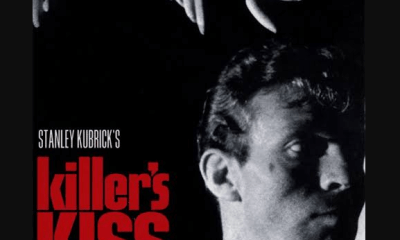
 Featured Articles3 weeks ago
Featured Articles3 weeks agoThe Hauser Report: Cinematic and Literary Notes
-
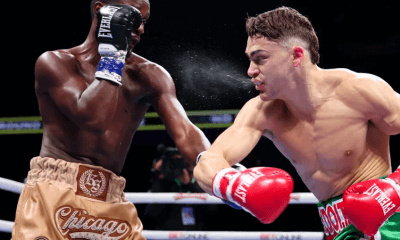
 Featured Articles4 weeks ago
Featured Articles4 weeks agoOscar Duarte and Regis Prograis Prevail on an Action-Packed Fight Card in Chicago
-
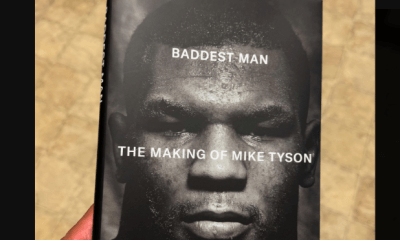
 Book Review3 weeks ago
Book Review3 weeks agoMark Kriegel’s New Book About Mike Tyson is a Must-Read
-

 Featured Articles1 week ago
Featured Articles1 week agoThe Hauser Report: Debunking Two Myths and Other Notes
-
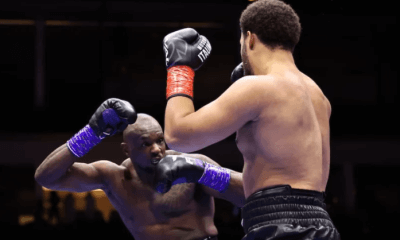
 Featured Articles2 weeks ago
Featured Articles2 weeks agoMoses Itauma Continues his Rapid Rise; Steamrolls Dillian Whyte in Riyadh
-
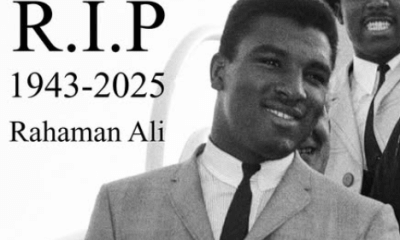
 Featured Articles4 weeks ago
Featured Articles4 weeks agoRahaman Ali (1943-2025)
-

 Featured Articles3 weeks ago
Featured Articles3 weeks agoTop Rank Boxing is in Limbo, but that Hasn’t Benched Robert Garcia’s Up-and-Comers
-
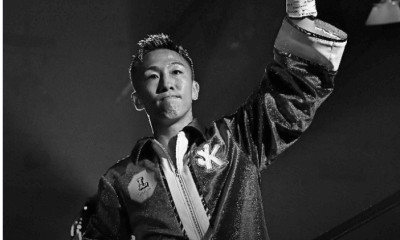
 Featured Articles3 weeks ago
Featured Articles3 weeks agoKotari and Urakawa – Two Fatalities on the Same Card in Japan: Boxing’s Darkest Day














